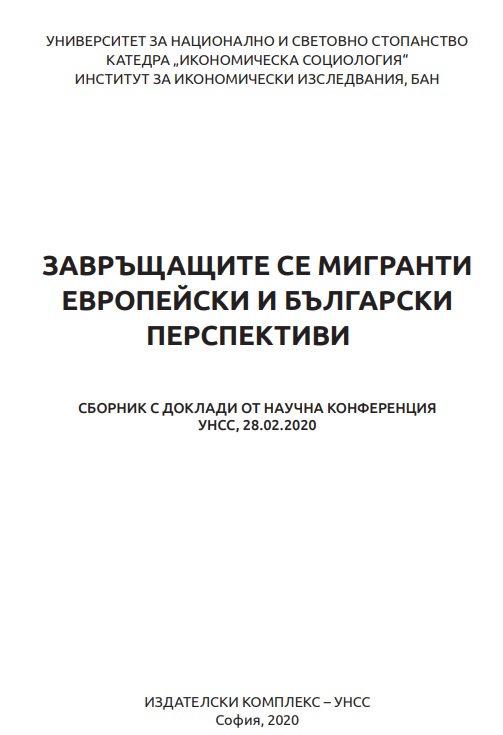Mobility Patterns of Eastern European Immigrants Resident in Spain
Mobility Patterns of Eastern European Immigrants Resident in Spain
Author(s): Rafael Viruela
Subject(s): Social Sciences, Sociology, Migration Studies
Published by: Университет за национално и световно стопанство (УНСС)
Keywords: Spain; Bulgarian And Romanian Migrants; Financial Crisis; Geographical Mobility
Summary/Abstract: This article reviews the mobility strategies adopted in recent years by the population born in Bulgaria and Romania, the two Eastern European countries with the highest levels of immigration to Spain. The financial and employment crisis which began in 2008, worsened in 2011 and manifested itself above all as an employment crisis has had a major impact on the dynamics of this migration flow. Reduced inflows and fundamentally, increased outflows (return, remigration) has reduced the stock of Bulgarian and Romanian residents by 30% in a very short time. Internal migration which involves changing the place of residence has also been reduced because the crisis has affected all Spain’s regions to a greater or lesser extent. However, inter-province travel for employment reasons has increased. Internal labour migration is related basically to temporary job opportunities in agriculture. Immigrants resident in Spain who travel from one province to others are joined by their compatriots from abroad. This situation explains why employment and numbers affiliated to the Social Security system are increasing at a time when the census of residents is falling. The economic recovery detected since 2014 must not be attractive enough to reactive immigration.
Book: Завръщащите се мигранти: европейски и български перспективи
- Page Range: 53-68
- Page Count: 16
- Publication Year: 2020
- Language: English
- Content File-PDF

